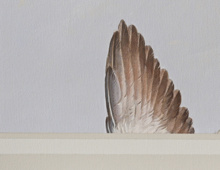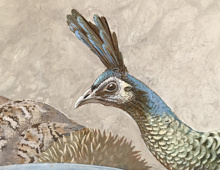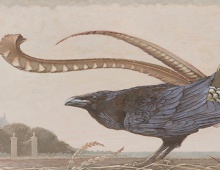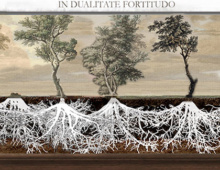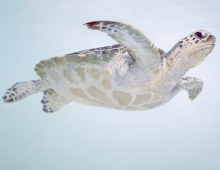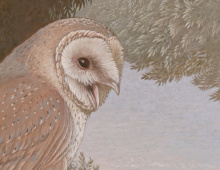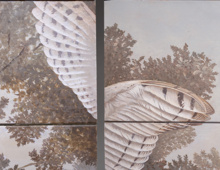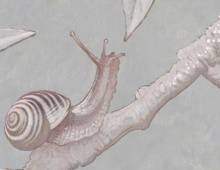A new painted ceiling and six wall sized botanical panels for San Anton Palace, Malta's 17th c. Presidential residence
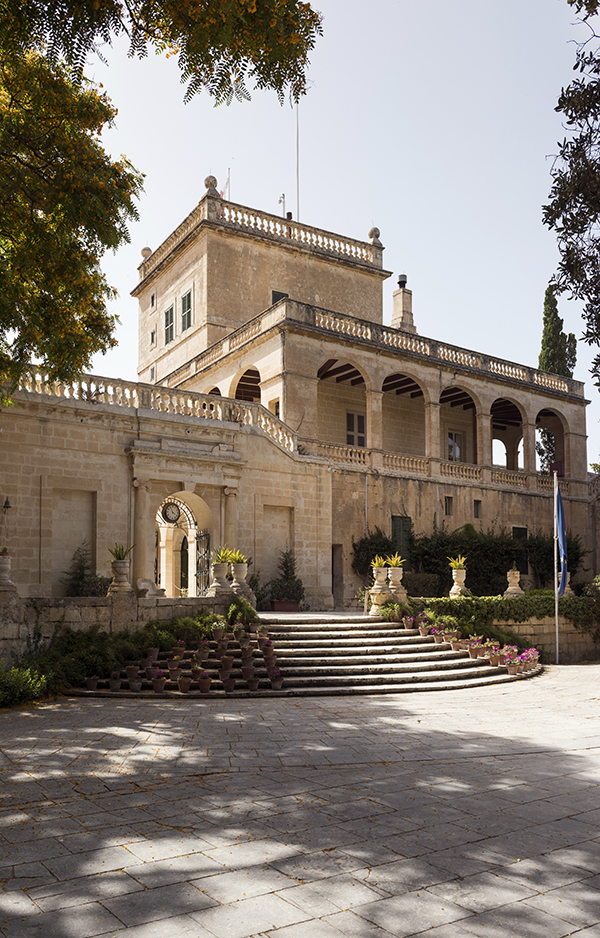
When a wing of Malta’s 17th century presidential residence underwent extensive redecoration, Dutch artist Peter Korver was commissioned to create a series of botanical paintings for the palace’s Grand Salon. Now installed, Korver’s ceiling fresco and monumental wall panels beckon you to meet some remarkable animals and plants deeply rooted in the soil of these islands, almost literally so, as the paint used as background was made using the dust of pulverized Maltese limestone.
“I live, when in the country, which I am nine days out of ten, at the Palace of San Anton. If living in lofty and splendid rooms is a pleasure,
I have it.” wrote early romantic poet Samuel Coleridge to a friend in 1804, while staying in Malta for several years in the entourage of the first British Governor. Unfortunately, in later years, some of Malta’s heads of state did not always share Coleridge’s aesthetic appreciation, and thus, over time, an entire wing of the Palace was stripped off the grandeur which had enraptured the English poet and was turned into series of bleak offices. “But that was to change when current President Coleiro Preca took office in 2014, making it one of her missions to bring back the splendour that would once have distinguished these rooms,” explains Dutch artist Peter Korver, who became an integral part of the restoration.
Known for his ceilings, panels and murals of intricately painted plants and animals, Korver’s artwork adorns Amsterdam’s canal houses and Dutch period estates. Owing both to his artistry as well as historical sensitivity, Korver was brought on board the San Anton redecoration project by Lisa Carson of Milano / Malta based design firm DAAA-haus and charged with the task of instilling a new sense of painted imperial magnificence in the palace’s Grand Salon.
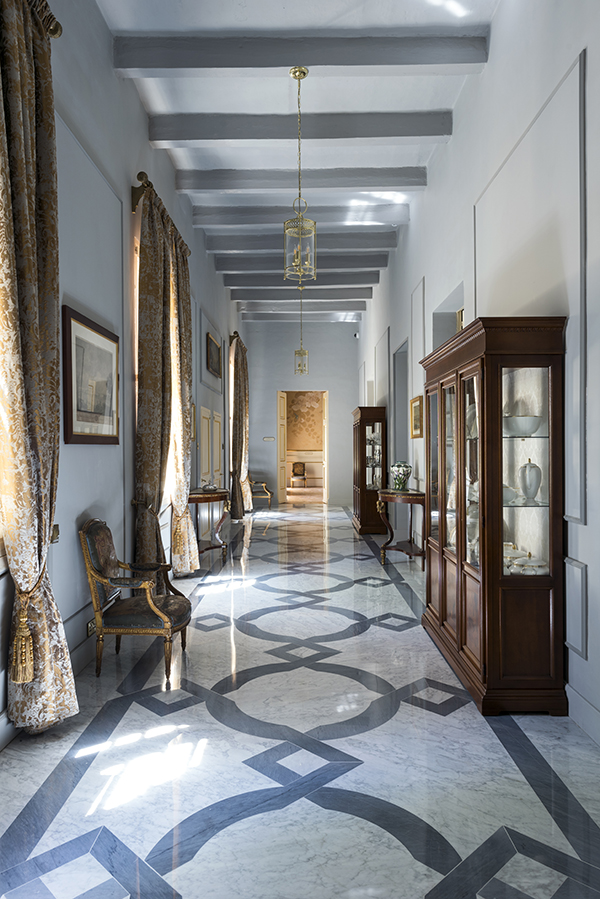
.
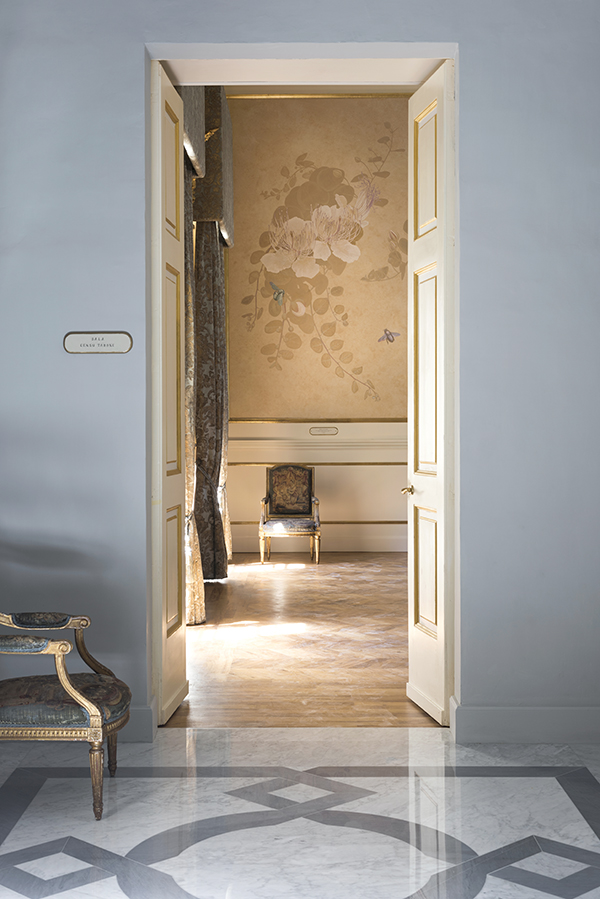
.
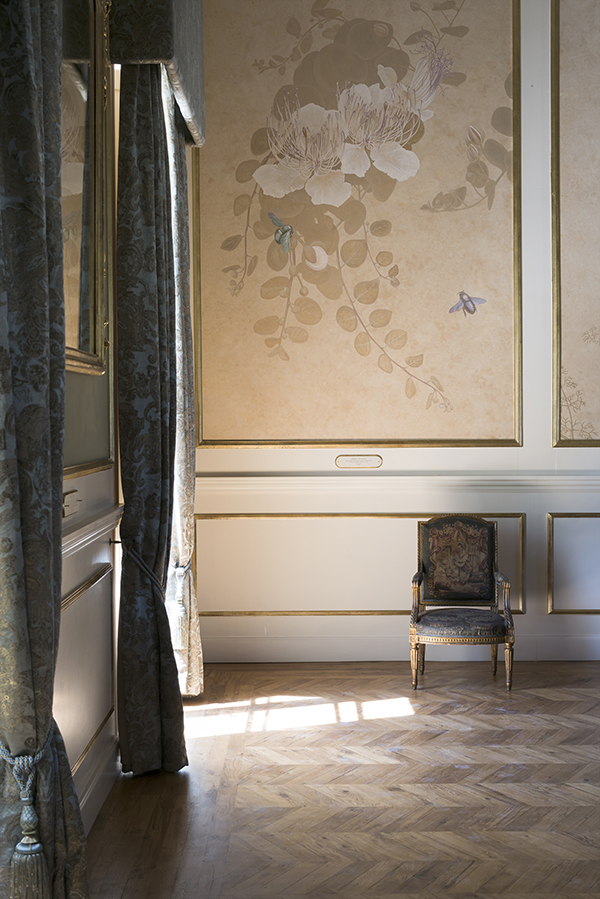
.

.
Vegetal rendez-vous
Renovations began with the music room in 2015, and over the course of the following years, six further state rooms were restored of which the Grand Salon is the largest With windows on both sides, the room seems to act as a link between the extensive gardens the Palace has been surrounded with ever since it was built in the early 17th century as a country retreat by French knight Antoine de Paule.
Staying as guest at the palace for close to three months altogether, during several research- prepping- and installation trips, Korver not only could happily have repeated Coleridge’s words, he also became intimately acquainted with the Palace’s Gardens, their plant life and inhabitants. “One evening, just before nightfall, I was walking along the belvedere overlooking the gardens, when a heavy insect passed me by.” he remembers, “With that size, sound and distinct silhouette, at that time of day it could only be a hawk moth, one of my favourite animals since childhood.” It were ‘meetings’ like this, that in the end came to inform Korver’s paintings for the Grand Salon. “When I first arrived on Malta, my approach was driven by the island’s history of deforestation, its building boom, water problems and the process of desertification which all have been reshaping the landscape with increasing speed.” he explains. “What gently shifted my conservationist approach then, was cycling.” Against all recommendations, Korver rented a mountain bike and went looking for examples of plants he might use in his six monumental paintings. “Please don’t listen to anybody telling you otherwise’ he smiles “cycling is actually pretty good there” And while he also sought contact with Maltese biologists and botanists, it was discovering the island at a leisurely speed that turned the whole project in a different direction. “Some plants immediately stood out for me.” he recalls “the bright green stems and intricate pink based leaves of Giant Fennel, with their dry flower heads as dark iconic silhouettes punctuating the landscape later during summer.” “Also the moment I came eye-to-eye with one of the omnipresent Fig Cactuses, I simply couldn’t resist their magnificent beauty.”
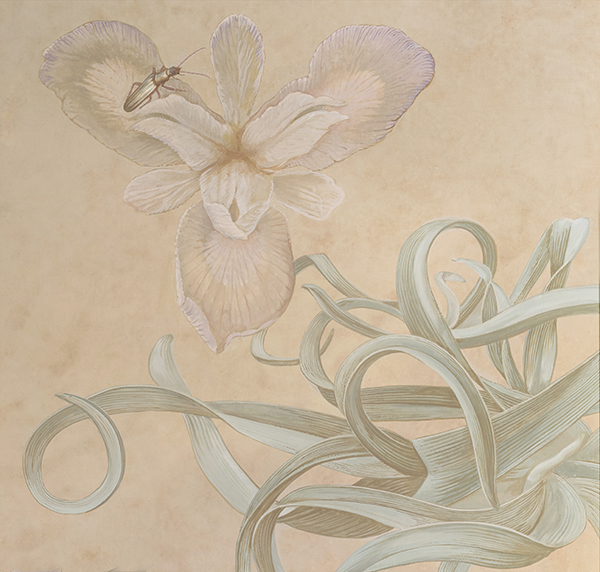
In much the same way an Agave wriggled its way into the palace’s paintings. Yet, the original plan was not entirely overthrown and to counterbalance his choice for two invasive plants taking up permanent residency on either side of the Salons fire place, Korver paired them with animals symbolic to Malta in other ways; Turtledoves, a Peregrine falcon and even a pair of the countries endemic Wall-lizards.
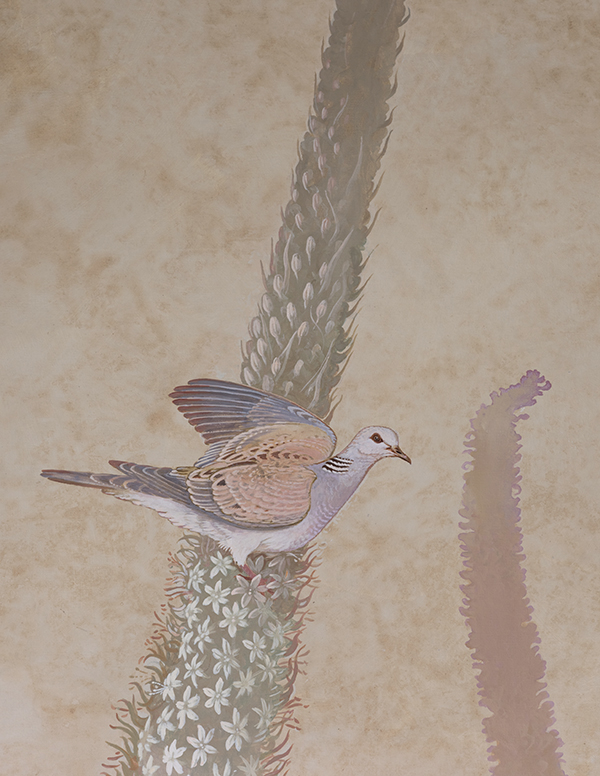
Limestone
Further vegetal rendez-vous led to the inclusion of flowering Capers and two iridescent Carpenter bees, Sea squill, Irises, Flower beetles and a Leopard snake. One particular meeting even provided Korver with the very basis for his pastel scenes. ‘One evening, I was walking over the rocky boulders along the coast.” he recalls “When I looked into the quiet waters, I saw sea urchins slowly crawling along the bottom,” “Then I turned around and noticed the same animals in the limestone rocks all around me, frozen in time, fossilised millions of years ago.” “All of the encounters I had on Malta left their traces but seeing these sea urchins at once alive and encapsulated in the rock, left me with an overwhelming feeling of continuity. It later led me to develop a paint made with pulverized Maltese limestone, which I subsequently used as background colour for these paintings.”
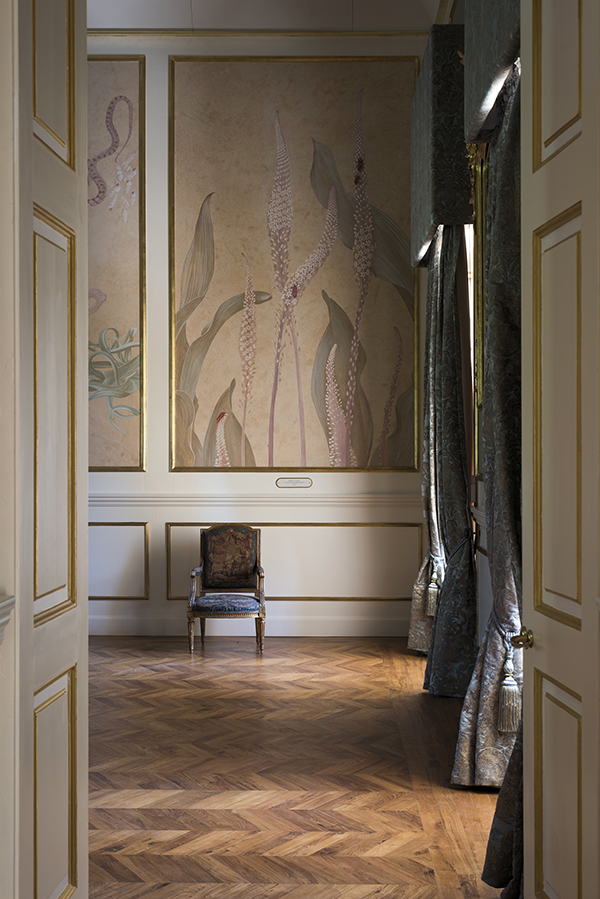
.
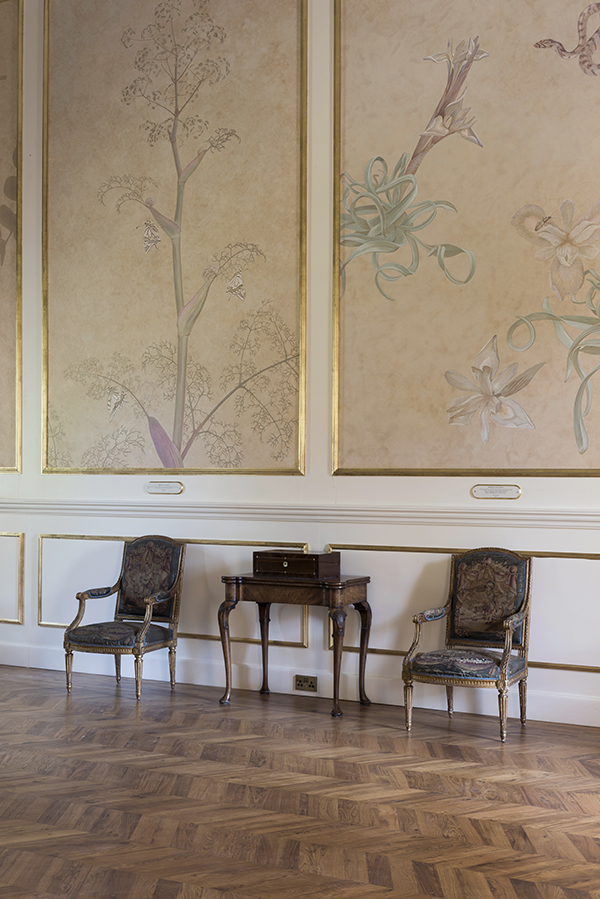
.
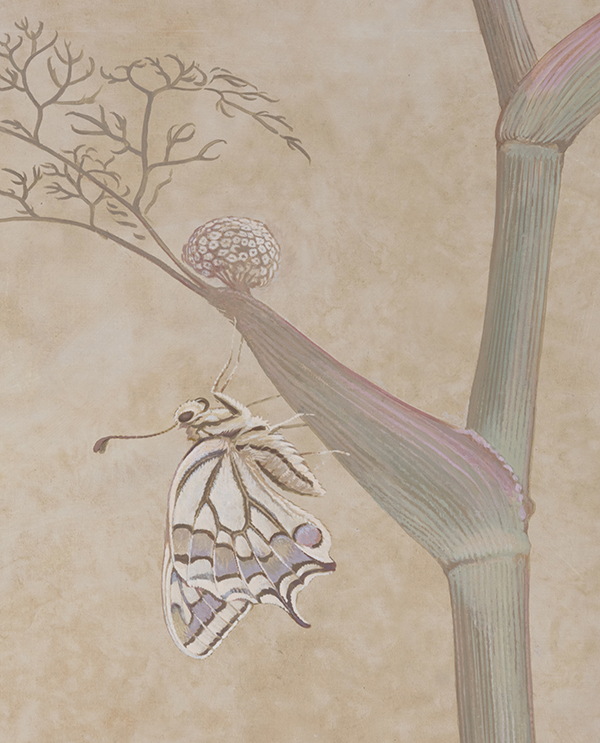
.
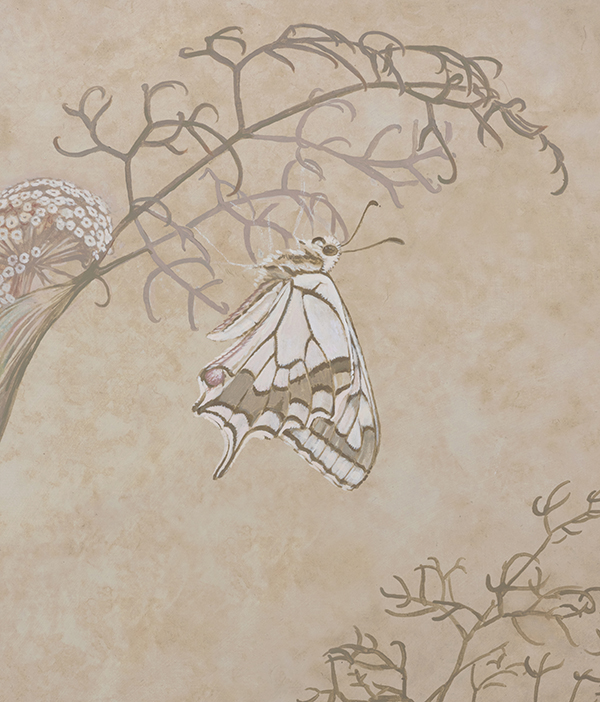
.
State portraits
The panels for the ceiling as well as the 3.6-m. tall wall paintings were executed in Korvers Amsterdam studio, from where they were eventually transported to Malta. “Visiting heads of state have been planting a tree in the San Anton Gardens to commemorate their stay at the palace for at least a century,” Korver says. “Installing these paintings of smaller and larger herbs on the scale of the trees Malta so urgently lacks, somehow felt like doing something similar.”
Indeed, upon entering the Grand Salon, one now finds Malta’s vegetal residents towering high over one’s head. The Giant Fennel Korver encountered appears to have grown to even more majestic proportions, as have the dormant swallowtail butterflies suspended from its leaves. Meanwhile, the spiralling leaves of Malta’s miniature irises have been enlarged a hundredfold, now bringing to mind the complex curls of the Rococo. ‘I have come to consider them as ‘portraits of the other residents of Malta,’ Korver says, ‘or, if you will, due to their size, as ‘state portraits.’ As with most paintings in the island’s three national palaces, a wooden plate with gilded edges has been placed underneath each of the new panels. In this case however these plates don't read the names of historic heads of state like Alexander Ball, Queen Adelaide, or Grandmaster de Paule, but: Sea Squill, Turtledove or Carpenter Bee .
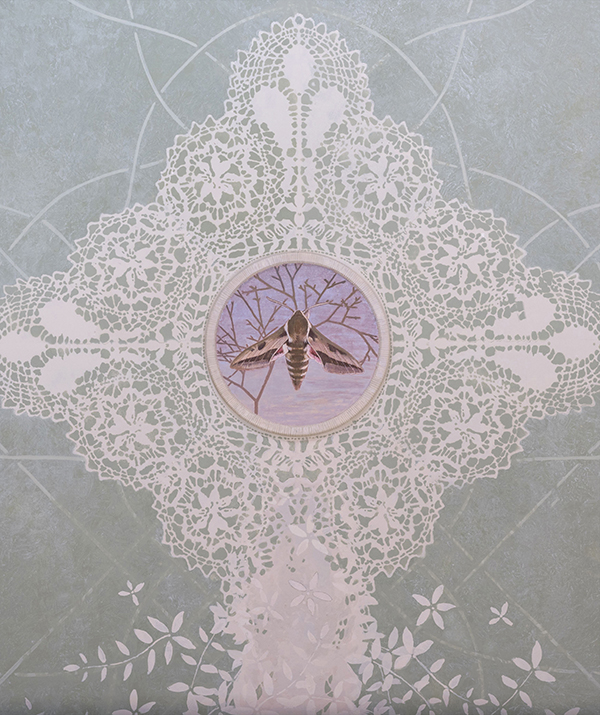
( European spurge Hawkmoth - Hyles euphorbiae - Baħrija tat-tengħud)
.
Maltese Lace - The Ceiling
Maltese bobbin lace has been world-renowned for eons, but the squares and circles of its intricate handkerchiefs, collars, cloths and coasters also reminded Korver of “those magnificent 18th century Georgian ceilings”, so it was clear from day one that lace somehow would serve as the base of the design for the Salons domed ceiling. Malta’s lace however is by nature not as floral as Brussels’ or Venetian for instance, so to get it to match the botanical theme of the room a ground of basic lace stitches was superimposed as a meandering grid, stretching the ceiling from corner to corner like the latticework of the faux painted treillage gallery this palace wing is said to have once held.
Along the sides of the ceiling four large lace trimmed cartouches have been painted, a night flying butterfly in each of them, all drawn to the light of an antique Murano chandelier. It’s the Maltese Hawk-moth Korver “met” at San Anton Gardens, now in the company of three closely related Mediterranean species. All equally stunning. “Recent research has shown that Malta’s endemic is a hybrid between the other species depicted here,” Korver explains “One from North Africa, one from Southern Europe.” “I didn’t know this when I painted them but I really like the idea that it in a way reflects the mixed language, history and culture of this country, especially as the combined outline of all four, subtly echoes the shape of a Maltese cross, one of the islands most cherished symbols”
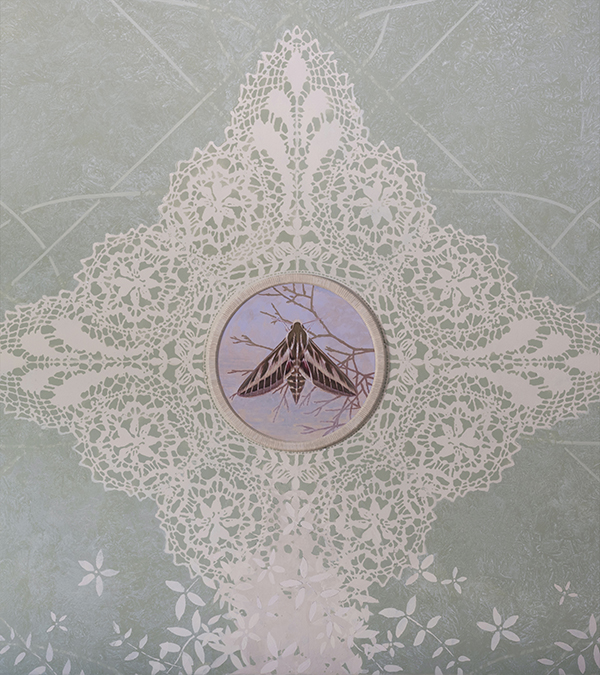
( Striped spurge Hawkmoth - Hyles livornica - Baħrija tat-dwieli )
.
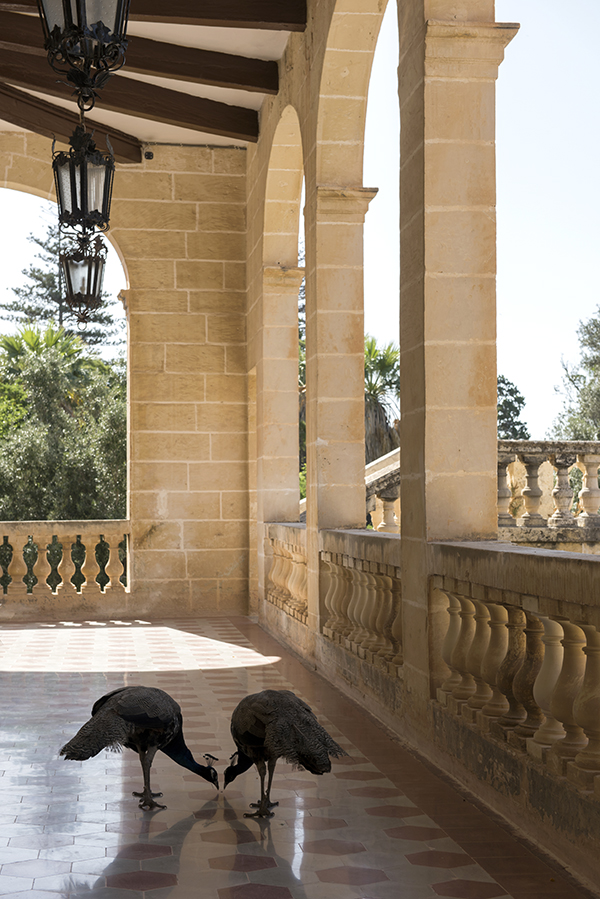
Sometimes one of them cautiously steps inside, through an occasional open door.
( Photo; Eddy Wenting ).
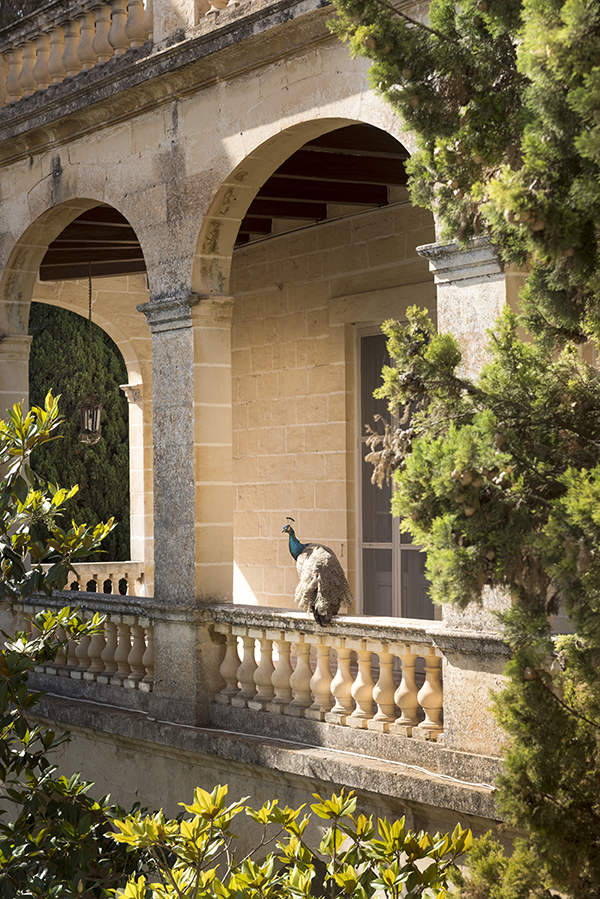
.


